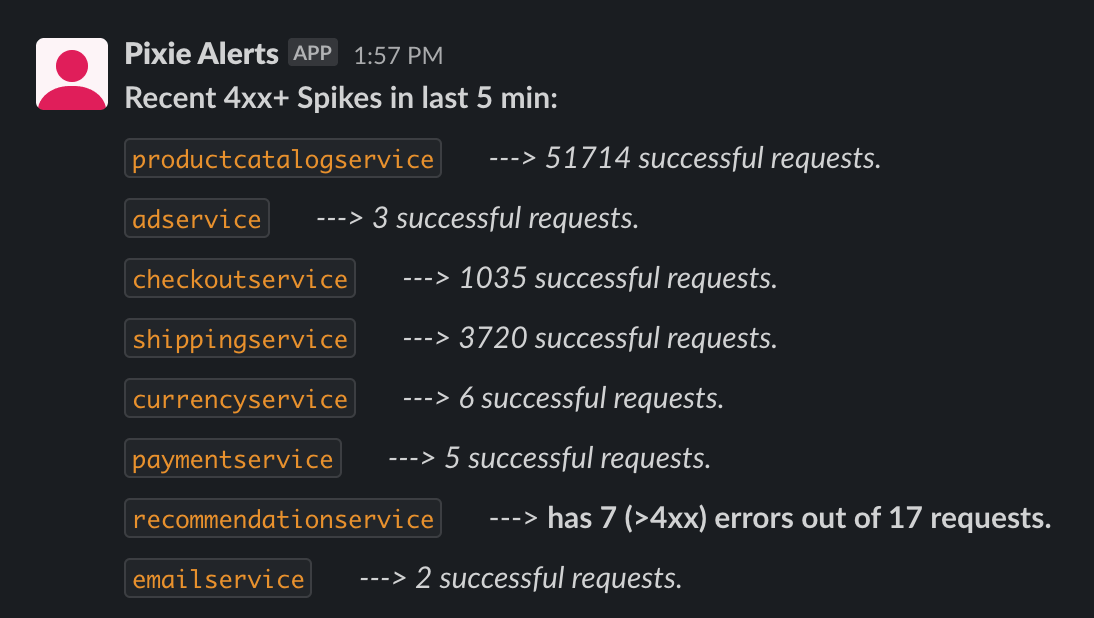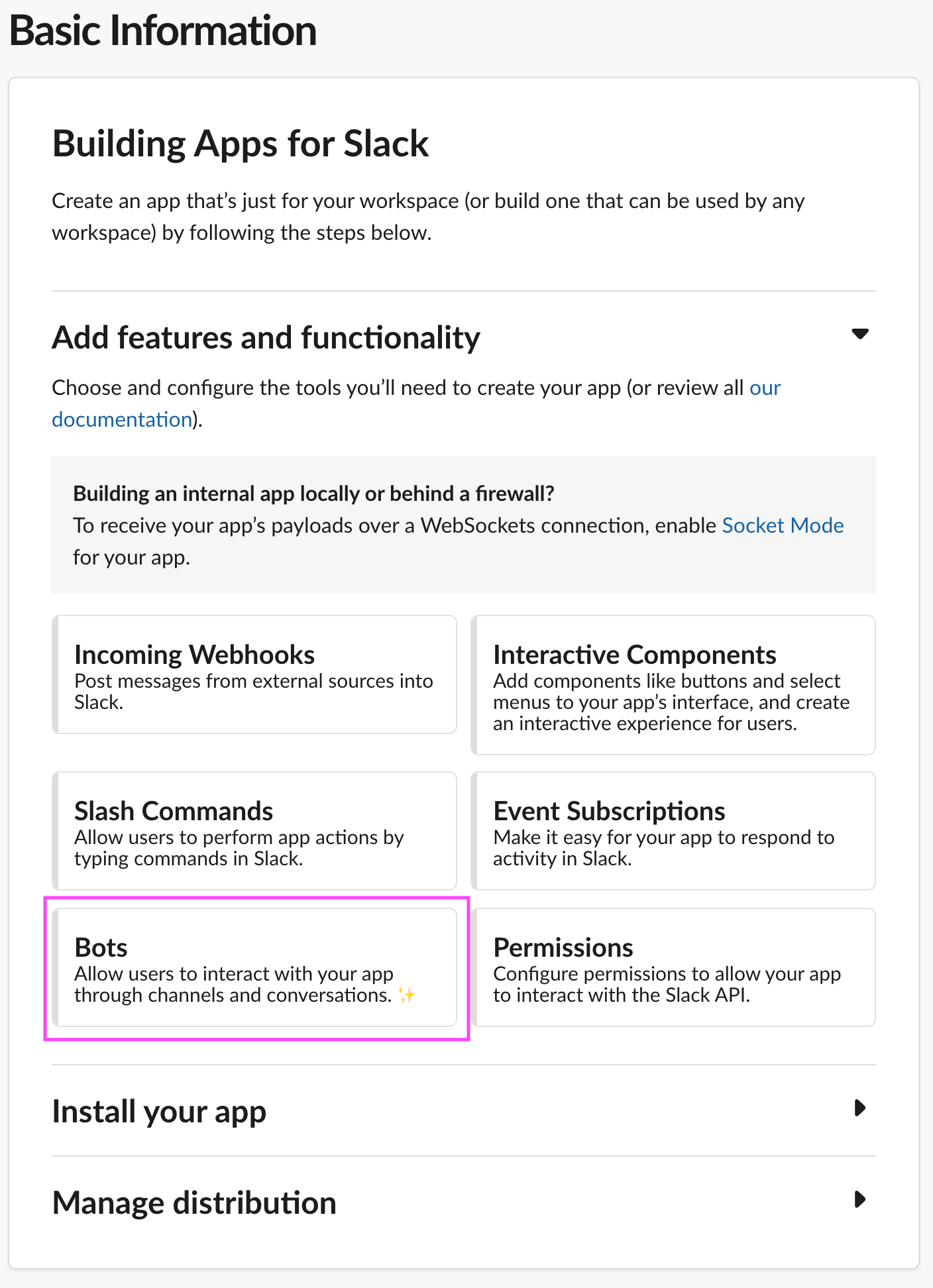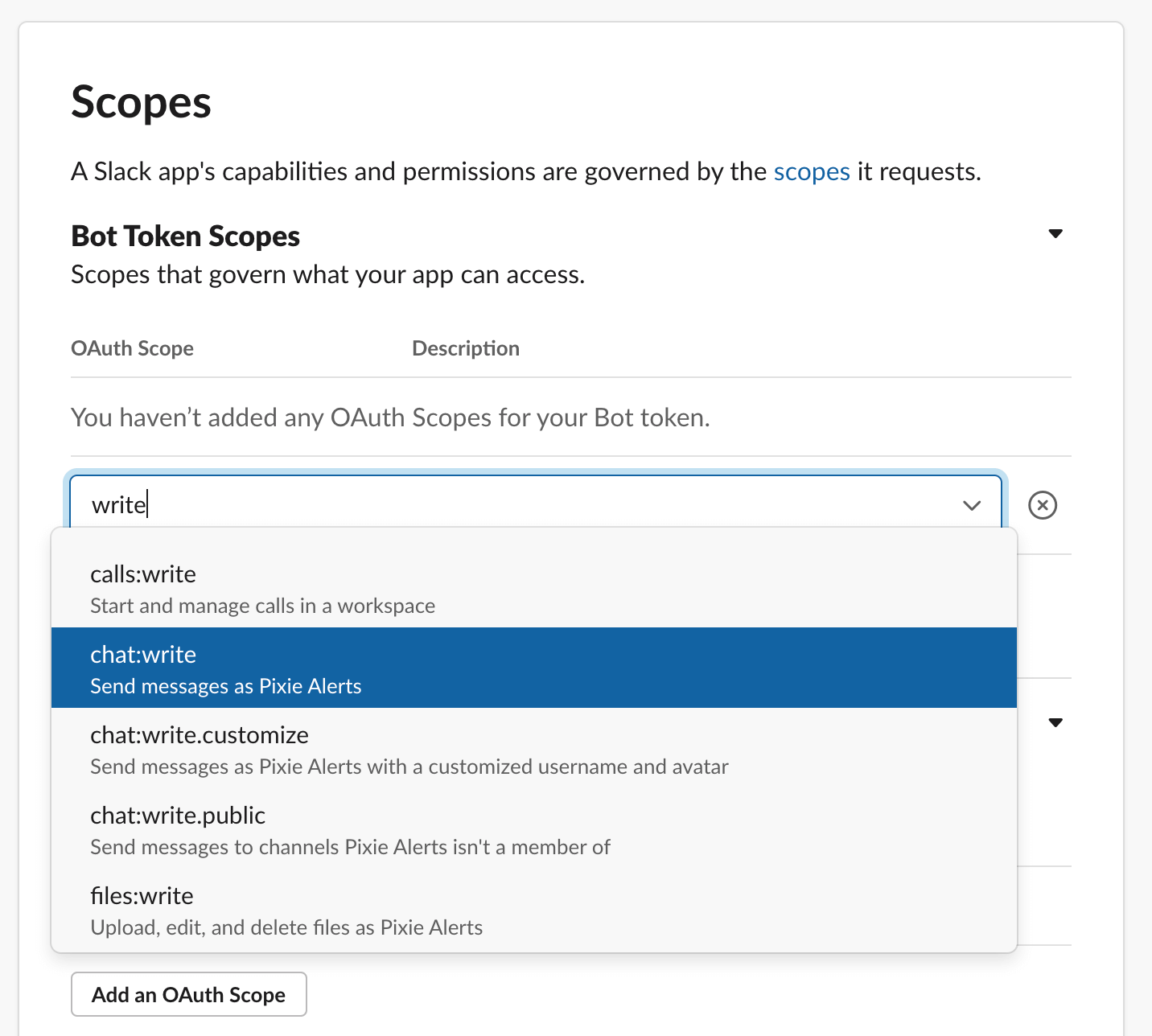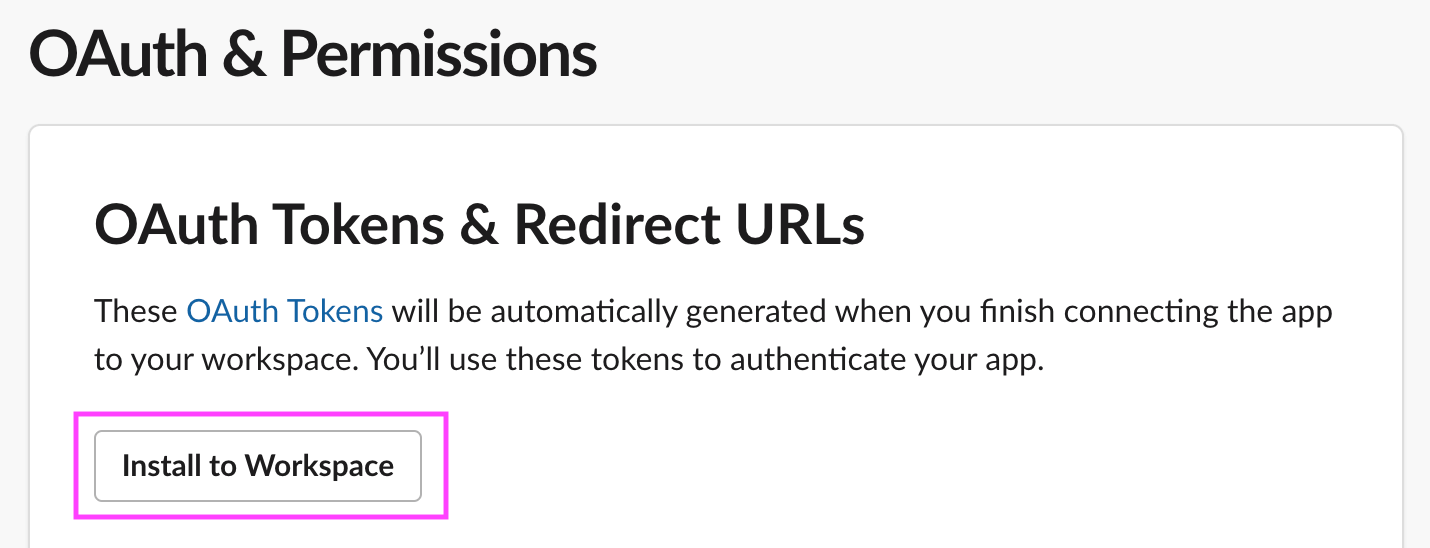- Home
- About Pixie
- Installing Pixie
- Using Pixie
- Tutorials
- Reference
This tutorial will show you how to create a Slackbot to monitor your Kubernetes cluster using data from Pixie's observability platform. This Slackbot reports the number of HTTP errors per service in your cluster. However, the example code can be modified to alert based on any data available from Pixie.

This tutorial assumes:
You have a Slack workspace to install your Slack App to. If not, please create a workspace.
You have a Kubernetes cluster with Pixie installed. If you don't have a cluster, you can create a minikube test cluster and install Pixie, using our install guides.
First, you'll need to create a Slack App, which will allow our application to post messages in a Slack channel.
- Go to https://api.slack.com/apps and select
Create New Appon the top right.

Name your app
Pixie Alertsand select the workspace to test your app in.After creating the Pixie Alerts App, you'll be taken to the
Basic Informationpage for the app. UnderAdd features and functionality, selectBots.

On the next page, select the
Review Scopes to Addbutton.On the next page, scroll down to the
Scopessection, select theAdd an OAuth Scopebutton and then thechat:writeoption.
The Pixie Alerts App will simply write to a channel, but if you wanted to add support for direct messaging or other functionality, you'll need to increase the bot's scope on this page.

- Scroll up to the top of this page (
OAuth & Permissions) and selectInstall to Workspaceto install the Pixie Alerts App to your workspace.

- Copy the
Bot User OAuth Access Token.

Create a new channel called
#pixie-alertsfor the Pixie Alerts App to post in. If you use a different channel name, you'll need to update theCHANNELvariable in the slackbot code.Invite the Pixie Alerts App to the channel, using
/invite @Pixie Alerts.

- Use Pixie's CLI to deploy the
px-sock-shopdemo. Our Pixie Alerts App will report HTTP errors for services in thepx-sock-shopnamespace.
px demo deploy px-sock-shop
Find your cluster's ID following the directions here. Save this string, we'll use it in Part 3.
Create an API Key following the directions here. Save this string, we'll use it in Part 3.
This tutorial uses example code from Pixie's GitHub repository.
- Get the example directory.
# Clone the Pixie repository.git clone https://github.com/pixie-io/pixie-demos.git# Change to the app directory.cd slack-alert-app/<language>
- (Python only) Install the dependencies.
# Requires Python 3.8.7+pip install -r requirements.txt
- Create the environment variables required by the slackbot code:
# Slackbot token from Part 1.export SLACK_BOT_TOKEN="your_slackbot_token"# Pixie Cluster ID from Part 2.export PIXIE_CLUSTER_ID="your_cluster_id"# Pixie API Key from Part 2.export PIXIE_API_KEY="your_api_key"
- Run the slackbot app:
go run slackbot.go
Congrats, your Pixie Alerts App will now post automated alerts to the #pixie-alerts channel in your Slack workspace!
The slackbot can be modified to alert based on any information available from Pixie's observability platform. Some notes:
We recommend testing your PxL code in the Live UI. Once it works, you can replace the
PXL_SCRIPTstring in the slackbot app code.The example
PXL_SCRIPTfilters for services in thepx-sock-shopnamespace only. Make sure to modify or remove this line to fit your cluster's needs.Make sure that the
start_timevariable in yourPXL_SCRIPTmatches the slack messaging interval to get data for that specific interval only.The table name supplied in the call to
px.display(df, "<table_name>")needs to match the table name in the slackbot app call to the Pixie API, else you will receive aValueError: Table 'table_name' not receivederror.
- Python slackbot code forked from How to build a basic slackbot: a beginner’s guide.